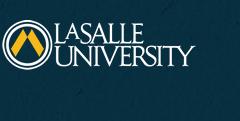Graduate Annual
Abstract
Special education teachers are called upon to address a myriad of special educational needs. We are trusted to design and implement interventions tailored to each individual student with the overarching goal of equipping the student for success in education and ultimately in life. We must bring theory and research, from various child centered fields of study, directly into the real life of the classroom and, by association, the family, community, and society. We use Evaluation and Reevaluation Reports (ERs & RRs), Individualized Educational Plans (IEPs), and other records and reports that accompany a student entering our classroom to identify strengths and needs. We employ activities and methods to help the student meet the needs, use the strengths and progress toward achieving the IEP goals. The information and accountability of these reports is our starting place in programming for the individual student, but it is not the limit of our responsibility to engage the student in learning across all possible content. The overarching goal of creatively engaging students and equipping them for success as lifelong learners should include all students of all abilities. One of the more challenging situations encountered in special education is teaching students with little or no effective communication skills. Their negative behaviors may be the first, most observable, most disruptive challenge. Looking past the obvious behaviors, frustration and anxiety are often present for the student without means to express even simple wants and needs. The student may be in a state of trauma from experiencing aggressive behavior, consistent frustration and the personal consequences of negative behaviors (Bath, 2008). Improvements in communication can result in decreased negative behavior and increased engagement in learning activities, and greater compliance with tests or probes used to track progress toward goals (Durand, 2001; Mancil, 2006; Tiger, 2008). This paper attempts to create a positive framework for an effective multidisciplinary intervention design to address special needs of students with communication disorder.
Recommended Citation
Almerini, Joan
(2014)
"Planning and Implementing Interventions for Students with Communication Disorders: An Integrated Framework with Perspectives from Cognitive, Developmental, & Behavioral Psychology, Occupational Therapy, Physical Therapy, Speech Therapy, and Linguistics,"
Graduate Annual: Vol. 2
, Article 5.
Available at:
https://digitalcommons.lasalle.edu/graduateannual/vol2/iss1/5
